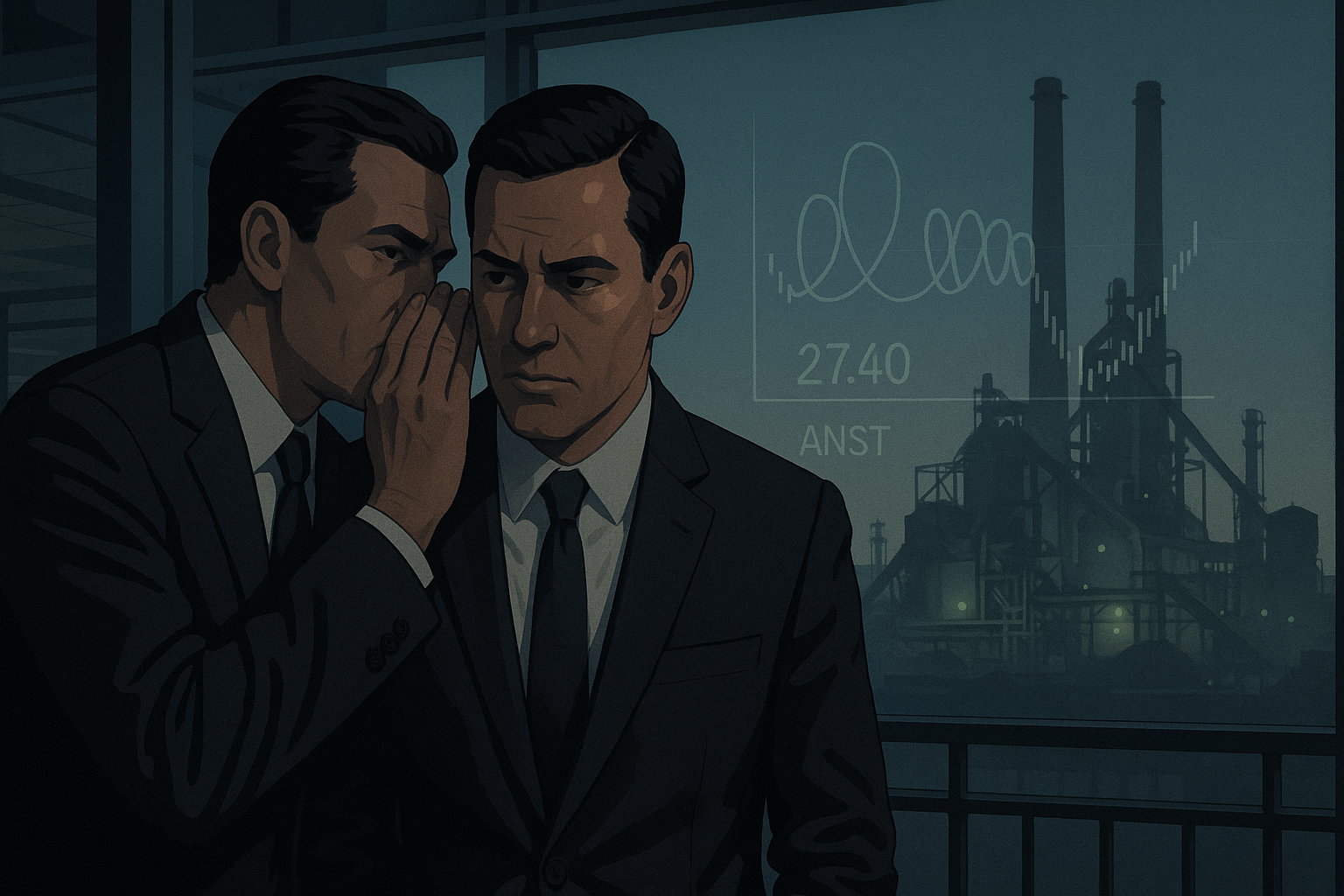Let me tell you something about Wall Street that hasn't changed since the days of ticker tape: it's still a playground for whispers. In an era of algorithmic trading and instant information, you'd think the days of "psst, have you heard about..." would be long gone. They aren't.
Anacott Steel ($ANST) presents a fascinating case study in this enduring phenomenon.
For the past year and a half, this mid-cap industrial has been quietly—almost suspiciously quietly—reshaping itself. I've been watching the stock chart form what old-timers call a "coiled spring" pattern, with repeated touches of that $27.40 support level that practically screams accumulation.
But here's the weird part: the fundamentals don't match the muted price action at all.
The company's sporting a P/E ratio of 13.8 (the sector averages around 18), has expanded margins for three straight quarters, and carries debt levels that wouldn't make a banker flinch. Having covered industrial stocks since the post-COVID recovery period, I can tell you this combination usually attracts attention. Yet Anacott seems to be flying under almost everyone's radar.
Why?
The Art of Quiet Accumulation
Remember the first rule of serious money-making on Wall Street: the best opportunities are the ones nobody's talking about yet.
There's something almost artistic about watching institutional investors build positions. They don't just back up the truck and load up all at once. No—they ease in, buying on weakness, never enough to spike the volume charts or trigger the algorithms that watch for unusual activity.
And Anacott? It's got all the fingerprints of this kind of methodical positioning.
The DoD contract news—which ordinarily sends defense-adjacent stocks surging—barely registered a blip. That's... unusual. (Unless, of course, certain players already knew and had been positioning accordingly.)
Look at the technicals and you'll see what I mean. The RSI sits at a comfortable 56—not high enough to trigger selling programs. The MACD shows a recent bullish crossover that somehow hasn't attracted the momentum crowd. Volume patterns show steady accumulation rather than frenzied buying.
It's like watching a poker player who's just been dealt aces trying not to smile.
We've Seen This Movie Before
The mid-80s were a different world—Michael Milken was reshaping corporate finance, "greed is good" hadn't yet become ironic, and Anacott Steel found itself at the center of similar quiet accumulation patterns before a massive run-up.
Different circumstances, same playbook.
What's particularly interesting about the current setup isn't just the defense angle (though in this geopolitical environment, that's significant), but this "green-steel process" mentioned in Department of Energy approvals. In an industry where energy costs can make or break profitability, this isn't just environmental window dressing—it's a potential competitive moat.
Could this explain the whispers? Perhaps.
The Attention Economy of Markets
Why doesn't everyone see this? It's a fair question.
In theory, markets shouldn't allow these inefficiencies to persist. Information is supposed to spread rapidly, prices adjust accordingly, and that's that. But markets aren't theoretical constructs—they're human systems (even with all the algorithms), and humans have limited attention.
The blunt truth? Nobody cares about steel when they can talk about AI and gene editing.
This attention deficit creates blind spots. While CNBC hosts breathlessly debate the latest tech earnings, companies like Anacott can undergo meaningful transformations with hardly a mention. By the time the broader market notices, the smart money has already established positions.
I spoke with several industry analysts who acknowledged they'd reduced coverage of traditional industrial materials to focus on more "exciting" sectors. One admitted, "We go where the clicks are, and right now, that's not steel."
Their loss, potentially.
Reading Between the Lines
What we're witnessing with Anacott might be the market's oldest information game playing out in real time—the creation of a price inefficiency through selective attention and controlled information flow, followed by its inevitable correction when the information finally reaches critical mass.
The playbook hasn't changed much since those Rothschild pigeons brought news of Wellington's victory at Waterloo before anyone else had it.
The signals are there for those paying attention: strong fundamentals, accumulation patterns, strategic repositioning, and those curious whispers of institutional confidence.
Is it a sure thing? Of course not. The market has a wicked sense of humor, and nothing makes a thesis fall apart faster than widespread confidence in it.
But sometimes... just sometimes... those whispers are worth listening to.
(And no, that's not investment advice. Just an observation from someone who's watched this particular dance many times before.)
